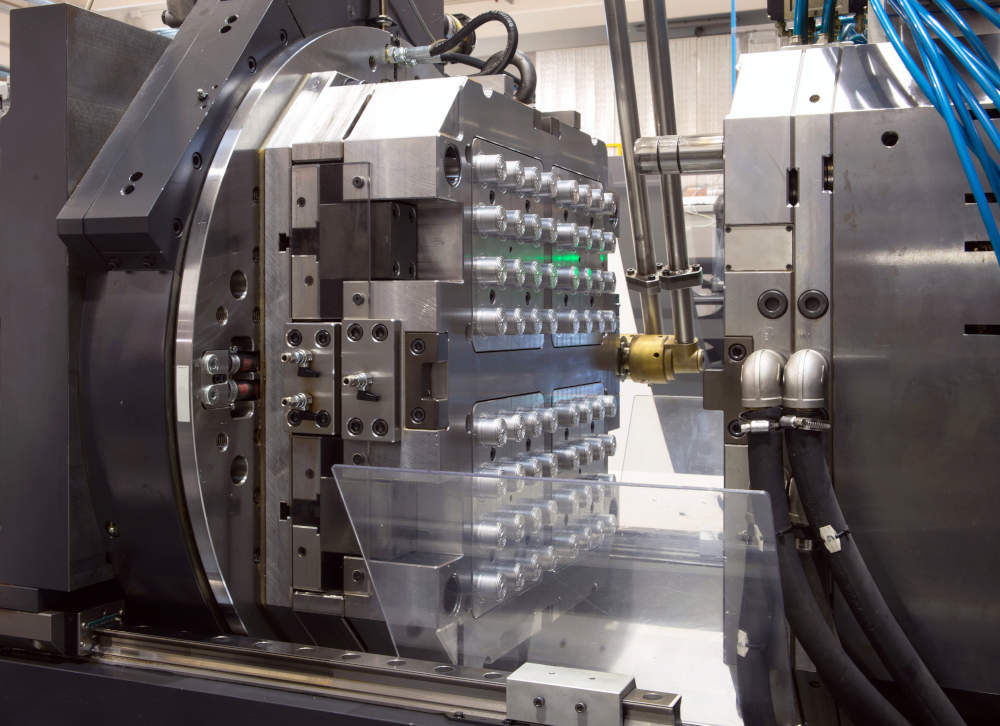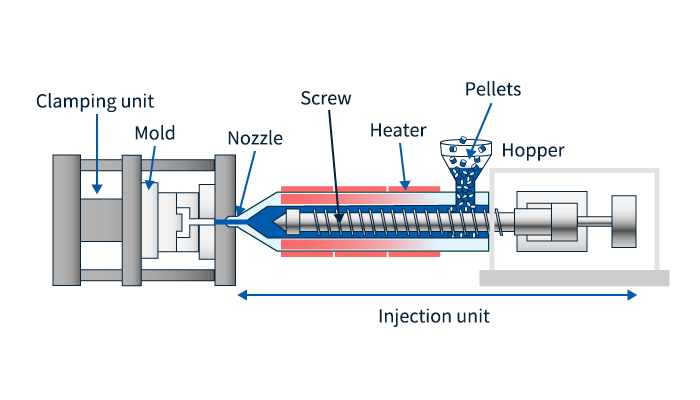The Future of Plastic Injection Molding: Fads and Technologies to View
As the plastic injection molding sector advances, numerous key fads are arising that assurance to reshape its landscape. Automation and smart manufacturing methods are set to enhance efficiency, while the shift towards sustainable products reflects a growing environmental consciousness.
Automation and Smart Production
As the plastic shot molding sector progresses, automation and wise manufacturing are taking spotlight, reinventing manufacturing procedures - Plastic Injection Molding. The integration of sophisticated innovations such as robotics, IoT (Web of Things), and expert system is enabling producers to enhance effectiveness, minimize functional expenses, and enhance item quality. Automated systems improve operations, lessening hand-operated treatment and raising throughput, which is vital in fulfilling the rising need for fast manufacturing cycles
Smart producing technologies assist in real-time monitoring and data analysis, enabling companies to optimize machine performance and forecast maintenance requirements. This proactive technique not just decreases downtime yet likewise expands the lifespan of equipment. The use of collective robotics, or cobots, boosts the versatility of manufacturing lines, making it possible for employees and makers to operate side by side securely and effectively.
The adoption of automation in plastic shot molding is not merely a fad yet a critical necessary for services intending to remain affordable in an international market. By taking advantage of these modern technologies, suppliers can attain higher accuracy, decrease waste, and adapt quickly to transforming client demands, positioning themselves for lasting development in an increasingly automatic future.
Lasting Products and Practices
The push towards automation and wise manufacturing has actually led the way for a better emphasis on sustainable products and methods within the plastic injection molding sector. Firms are progressively seeking environmentally friendly alternatives to traditional petroleum-based plastics, resulting in the fostering of recycled and bio-based products. These sustainable products not only lower ecological impact yet additionally line up with consumer need for greener products.

Additionally, collaboration in between producers, material distributors, and environmental companies is cultivating technology in the advancement of sustainable products that fulfill efficiency standards without endangering top quality. As laws around plastic use come to be stricter, the industry is poised to adjust by embracing these lasting techniques, guaranteeing long-lasting practicality and reducing dependence on non-renewable sources. The combination of sustainability into plastic shot molding is not merely a pattern; it is coming to be a necessary component of corporate responsibility and functional quality.
Advancements in 3D Printing
Recent advancements in 3D printing innovation are considerably changing the landscape of plastic shot molding. When tough or difficult to attain with standard methods, the combination of additive manufacturing processes allows for the fast prototyping of complicated geometries that were. This capacity not only increases product growth cycles but likewise decreases product waste, lining up with the growing demand for sustainable production techniques
Furthermore, the appearance of crossbreed manufacturing methods, which incorporate 3D printing and injection molding, offers suppliers the ability to develop intricate layouts while maintaining the efficiency of mass production. This strategy allows the production of tailored parts tailored to specific client requirements without giving up the speed and scalability that shot molding offers.
In addition, improvements in materials, such as high-performance polymers and composites particularly designed for 3D printing, are boosting the practical capacities of published elements. These products can endure better anxiety and exhibit improved thermal properties, making them suitable for even more requiring applications.
As 3D printing remains to evolve, its integration into plastic shot molding processes assures to improve performance, minimize prices, and foster innovation in item design, positioning suppliers to better meet the obstacles of an open market.
Data Analytics and IoT Combination
Data analytics and the assimilation of the Web of Points (IoT) are revolutionizing plastic injection molding by giving producers with unprecedented insights into their procedures. By leveraging real-time data accumulated from interconnected machines and sensors, makers can monitor efficiency metrics, identify inefficiencies, and maximize production processes. This data-driven method facilitates predictive maintenance, reducing downtime and extending tools lifespan.
Moreover, IoT integration permits improved look at here high quality control. By constantly tracking variables such as cycle, pressure, and temperature times, producers can quickly detect variances from established specifications and make modifications in actual time. This not just boosts product consistency however likewise lowers waste and scrap prices.
The combination of information analytics and IoT innovations likewise encourages producers to take on more agile manufacturing techniques. With view it now access to comprehensive information analytics, organizations can reply to market demands with higher adaptability, changing manufacturing timetables and configurations as needed. This versatility is vital in a quickly altering production landscape.

Modification and Style Versatility
Just how can personalization and style adaptability boost the competitiveness of plastic injection molding? Customization permits suppliers to meet specific customer demands, suiting unique measurements, forms, and performances that standard items might not meet.
Innovations in get redirected here style technologies, such as computer-aided style (CAD) and fast prototyping, more boost this fad. These tools enable designers to create complicated geometries and elaborate patterns, which can be flawlessly integrated right into the production procedure. As an outcome, makers can react quickly to transforming customer choices and market demands.
Additionally, the application of modular tooling systems boosts design adaptability, permitting for quicker changes between different item layouts without comprehensive downtime. This adaptability can lead to lowered preparations and lower manufacturing expenses, making business extra nimble and competitive. Eventually, welcoming customization and design adaptability in plastic injection molding not only raises product offerings but also enhances market positioning in an ever-evolving landscape.
Verdict
The future of plastic injection molding is defined by significant improvements in automation, sustainable techniques, and ingenious products. The assimilation of IoT and data analytics will certainly boost functional performance and anticipating maintenance. Furthermore, the fostering of recycled and bio-based products, alongside progress in 3D printing, will cultivate sustainability within the market. Personalization through modular tooling and fast prototyping will certainly enable producers to remain receptive and affordable to the dynamic needs of the market.

The future of plastic injection molding is identified by substantial developments in automation, sustainable practices, and cutting-edge materials.